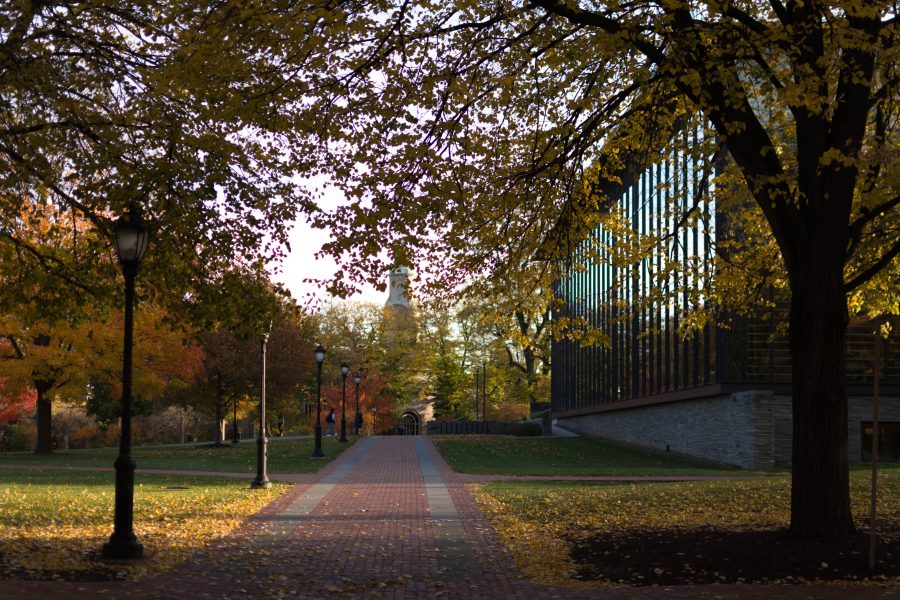Over the summer, the college took its first steps toward reaching net-zero carbon emissions by the year 2035, as outlined in the Climate Action Plan (CAP) 2.0 that was approved last February.
The first steps of the CAP 2.0 involves the integration of both on- and off-campus solar panels to the college’s power grid in order to reduce the carbon emissions caused by electricity usage.
According to Nick DeSalvo, the Campus Energy Manager, the school has formed a cohort with Lehigh, Muhlenberg, Dickinson and Swarthmore to aggregate Lafayette’s usage and the amount of electricity they need to purchase.
“We’re looking at a power purchase agreement arrangement with a developer. The project that we’re looking at seriously is a solar project in West Texas,” DeSalvo said. “Hopefully in the next week or two we’ll sign what’s called an exclusivity agreement, which locks in the amount of the project that we want to purchase as a developer.”
According to DeSalvo, this project will offset Lafayette’s emissions associated with electricity, which is approximately 47% of the school’s total emissions.
In addition to the off-campus solar panels, the school is currently looking into two potential locations for solar projects on campus. One is a roof-mounted system on the Kirby Sports Center, the other is a ground system at Metzger Fields.
Along with the steps taken over the summer, Lafayette conducted a Demand Response Load Drop Test. The last test was conducted on July 25th this past summer. During this test, the college sets a goal to drop their electricity usage below a certain level for the period of time the test is conducted, explained DeSalvo.
“We generate some revenue by participating in this program, and agreeing to reduce the amount of electricity we use during really hot periods when the grid might be having brownouts,” DeSalvo said.
According to DeSalvo, the revenue gained from participating in this program goes directly into the Green Revolving Fund, established by the CAP 2.0. This will provide funding towards future projects to further reduce the college’s environmental impact.
Over the summer, Lafayette worked on other conservation and energy measures that were mentioned in the Climate Action Plan 2.0. These measures were identified by the Stone House Group, who completed an in-depth inspection of Lafayette’s campus and gathered data to recommend a plan of action.
“We’re replacing all of the lighting in the Kirby Sports Center with LED’s, that will hopefully be completed end of September, early October,” DeSalvo said.
Another project that has been done is to re-balance the fume hoods in the Hugel Science Center.
“That’s really an energy intensive process to bring in outside air, condition it, heat it, cool it, whatever you’re doing to it, and then just pump it back outside,” DeSalvo said. “We expect that to be a really big savings as well.”
A pump located in Fisher West that circulates water for four buildings was also replaced with a more energy efficient model. Instead of running at full speed consistently, it will run at the speed required to meet the current demand, DeSalvo said.
Lafayette is continuing to complete projects on a variety of scales to strive towards their goal of carbon neutrality by 2035.
“We’ve been busy.” DeSalvo said.



























































































































